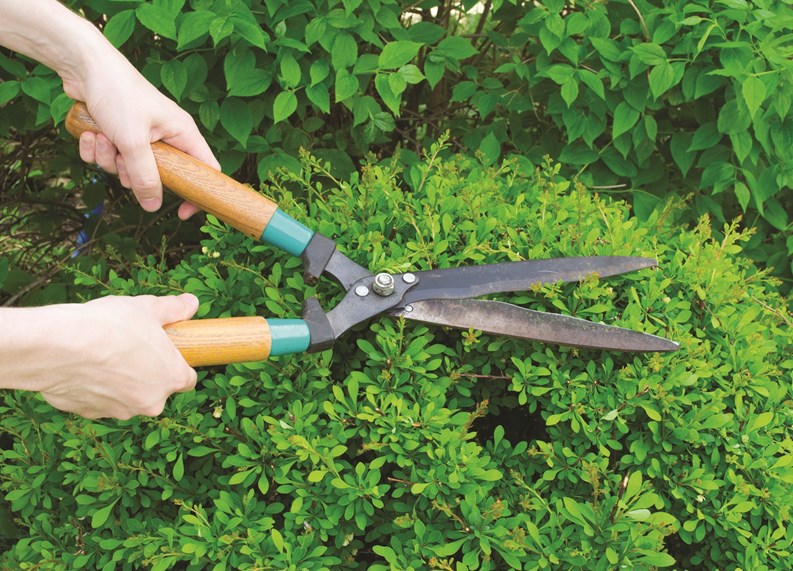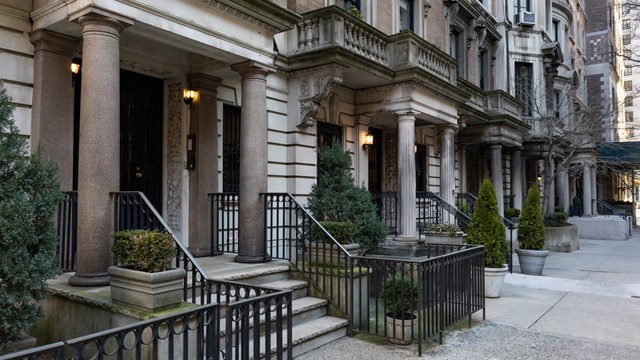Thank goodness spring is just around the corner. Even if winter isn’t the same brutal, icy season it used to be, it’s still a welcome relief when the clouds part, temperatures rise, and leaves and buds begin to appear outdoors. Nice as the changes are however, with them comes the need to give building interiors and exteriors a thorough cleaning. Think about all the residents and guests who have dragged the snow, salt and grit through your lobby and other common areas on their shoes, or hauled it in on the wheels of their luggage or baby strollers. Then there is the plow service that just might have torn up the grass a bit when they moved the snow — and thanks to some hefty winds this winter, there might be a few broken tree branches that could be posing as a safety threat to passersby, and need some tender loving care.
More Than Just Curb Appeal
At this time of year, it’s normal for co-op and condo apartment buildings to be in less-than-gorgeous shape, but getting them ready for spring is about more than just making the building look pretty. A routine thorough spring cleaning, especially on the exterior of the building, directly affects the building’s bottom line.
“Everybody has a choice where they are going to live,” says Neil Betoff, president of STAR Building Services in Shrewsbury, New Jersey. “People buy when they like what they see.”
A building that is easy on the eyes is said to have great ‘curb appeal,’ because it literally looks great from the curb. “Curb appeal is the first point of impression for any resident, guest, or potential buyer,” says Rolando Velazco, president of Clean Habitat Inc - Building Maintenance and Handyman Services, a building services and janitorial firm based in the New York City area. “It conveys a strong sense of commitment from the property owners and becomes more appealing to buyers, which increases value in their new investment. Resident morale is positively impacted if the building looks appealing and well maintained and this also creates a good relationship between building staff and residents.”
When a prospective buyer or renter drives or walks up to a property, one of the first things they will notice is the landscaping. Green trees and bushes and colorful flowers will draw residents and visitors into the building; brown grass and dry, withered flowerbeds will turn them away. It’s natural for the grass to turn brown and dry during the winter, but now is the time to get rid of the winter landscaping doldrums and start help it look lush and healthy.
Get On It
Lou Falcone, owner of Falcone Landscaping Construction Contractors, LLC, in Staten Island, says that if the building’s landscape looks like it is being maintained, a resident or guest can assume that the interior of the building is being maintained, too. Unfortunately, if you are a property manager or superintendent and haven’t already gotten a head start on your spring to-do list, Falcone says that you are already behind.
“Spring maintenance should be started at the end of February or by the beginning of March,” he says. “You need to get seeding done for the lawn when the grounds are starting to warm up in March. When we work on properties in March, we also aerate the lawn, put crabgrass preventative down, and put lime down to bring up the pH in the dirt. In April, we start seeding, and may add weed killers.”
Property managers and superintendents should do a thorough walk-through of the property, which can provide detailed information about what needs to go on the spring maintenance to-do list. Velazco says he walks through properties approximately three to four weeks before winter ends to prepare for spring cleaning and make suggestions for improvements. “This gives us sufficient time to communicate and discuss any improvements needed for the upcoming season with management or board members,” he says.
Velazco says that the biggest challenge for his clients is indoor floor weathering. “Snow and salt tracked in during the winter season can be damaging to the lobby and common area floors,” he says. “They need to take care of this. It’s important for the buildings to steam clean tile floors immediately after the winter season, which will result in a clean and polished look. This will remove any additional grit and grime, but if it’s not addressed, it can be embedded into the tiles.”
Indoors/Outdoors
When it comes to the exterior of the property, Betoff says that managers and supers should look closely at the sidewalks and the pavement on their walk-through.
“Look for cracking and problems with sidewalks, parking lot alligatoring, potholes and damaged curbs from snow removal plows,” he says. (‘Alligatoring’ is a condition where there are a series of cracks grouped together in one area of pavement; often they intersect and crisscross, making patterns reminiscent of crocodilian scales.) “Now is the time to fix those,” says Betoff. “Spring is also the time to fix dumpster enclosures and look at signage. Also look for cracks in the building from rain or melting snow that settled into the cracks and then, at night when it freezes, it expands.”
Water seepage is the biggest cause of exterior problems. When you are searching for signs of trouble on the outside of the building, look for cracks in the mortar, caulking and sealants.
Falcone says there are signs of seasonal wear-and-tear on the landscape that would also need to be addressed once winter’s mostly over.
“Look at the shrubs and see what kind of shape the grass is in,” he says. “Check for broken branches and take them out and clean up the flower beds and leaves.”
“Trees and plants need attention multiple times a week during the spring and summer,” says Velazco. “If you don’t have an irrigation system that your porter or super can put on a timer, then it’s important to implement a schedule for handling them – whether simply just watering or replacing the topsoil.”
Some elements of the property take more of a beating than others during the winter. “If the building has a sprinkler system in place, it may not be working right if it wasn’t cleaned out or winterized correctly,” says Falcone. “Also, there’s a chance that a plow could hit a sprinkler head near the curb.”
All winter, boilers and heaters have been making your chilly residents comfy cozy, but running them all the time can definitely take a toll. Now that the thermometers are creeping upward, it’s best to give these systems a once-over to make sure there are no leaks, cracking, or dangerous odors.
And act fast! “Now is the perfect time to do your spring cleaning walk through, in large part because you want to get on the vendor’s work schedule,” says Betoff, who says that his company is already largely booked up into April.
In-House vs. Outsource
If you spot anything that might seem dangerous, contact a vendor right away.
There are some spring cleanup responsibilities that can be left to the superintendents, while others are contracted out to the experts. “Property managers and supers can keep flower beds clean, and debris, such as leaves, removed and gutters cleaned,” says Falcone. “Supers can do a light power washing if the building needs it. They should check for cracks that need caulking and do any painting. Supers should just do the maintenance of the building.”
Betoff instructs his staff, as well as other supers, to get out there and get active once any snow is done falling and the storms have passed. “We instruct our staff to go outside and sweep away all the salt that is on the sidewalks, so it’s not crushed into the sidewalks or brought into the building,” says Betoff. “The on-site staff can then power-wash the sidewalks.”
Finally, although Memorial Day is still several weeks away, it’s time to start thinking about the summer too – and that means maintenance on pools and the pool equipment, as well as the furniture and planters that may surround them. “Examine the pool furniture, because now is a perfect time to repair it and get replacements if you need them,” says Betoff. “If you order any parts you need now, they will be here in time for the opening of the pool.”
The bigger the building or association and the more the residents, the more intense the spring cleaning project will be every year, but with some pre-planning, organization, and elbow grease, it’s manageable. “Being organized is very important,” says Velazco. “Making sure your supplies are fully stocked will ensure that you can service the building quickly and efficiently. We think it’s important to keep an attention to detail in the building; that way, the building always looks well kept, not just for spring, but all year round.”
Lisa Iannucci is a freelance writer, novelist, and editor and a frequent contributor to The Cooperator.










Comments
Leave a Comment